Ranthambore National Park is in the Sawai Madhopur District in the state of Rajasthan and is one of India's most famous parks, once the hunting grounds of royals and maharajas. The park was declared a wildlife sanctuary in 1957 and in 1974 it gained the protection of Project Tiger.
According to the 2014 tiger census, there were 62 tigers recorded in Ranthambore National Park. This makes it one of the best places in India for spotting a Royal Bengal Tiger.
Early one morning, just as the sun was rising, we spotted a young male Bengal Tiger walking down the edge of a dried-up river bed. He walked towards our vehicle with the warm light catching in his eyes.
Sub-adult male tiger who has just recently left his mother.
Generally, male cubs leave their mothers when they are about 18-22 months old.
The young tiger on the look-out for possible prey whilst being concealed by the long grass.
Alert female sambar deer, ears forward and tail raised, looking out for danger.
A male sambar deer running in the shallow lake water.


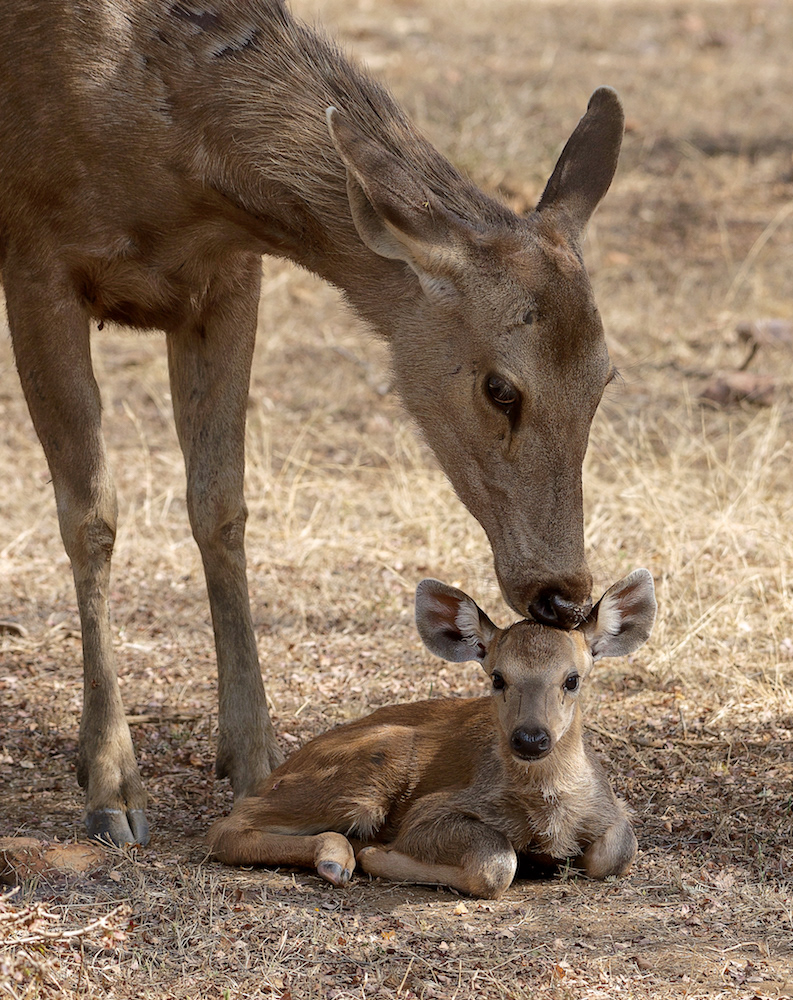
A female sambar deer with its young fawn.
It was early evening and having heard some distant alarm calls we were scouting the area when we spotted a young male tiger relaxing in the shade under a tree close to the road.

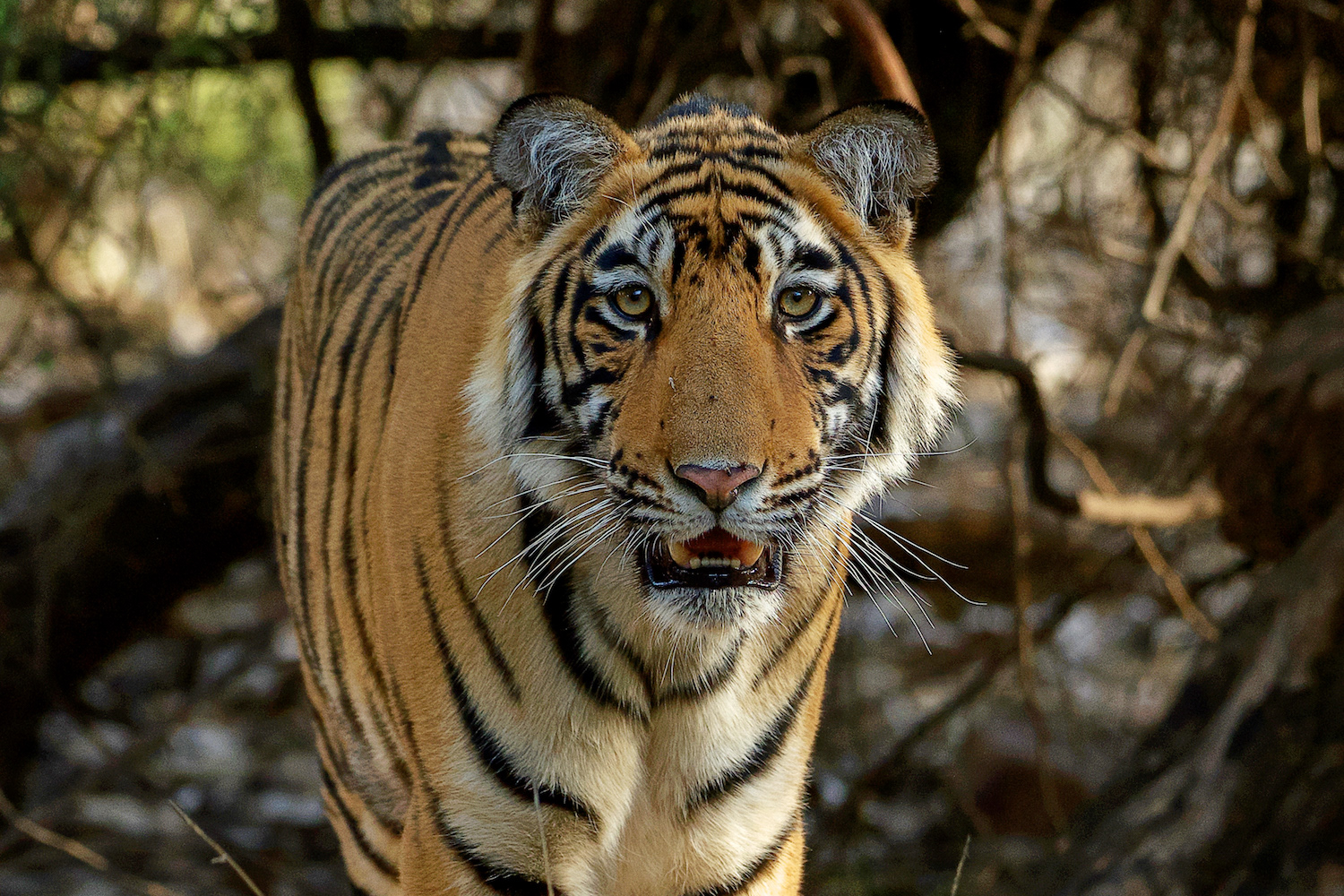
We were the only vehicle there and after a few minutes he got up and started walking towards us.
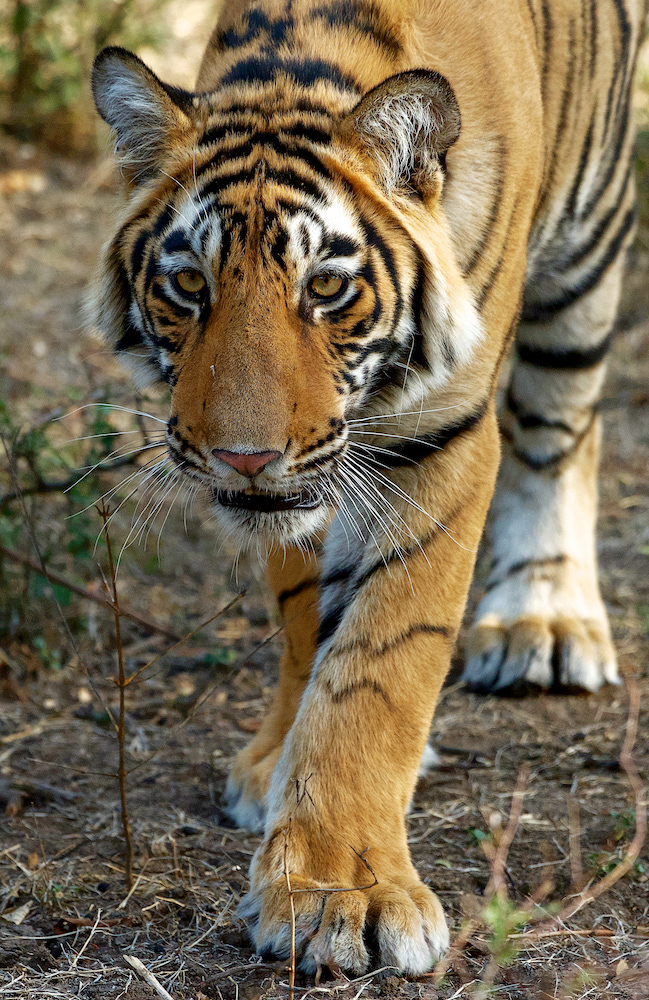
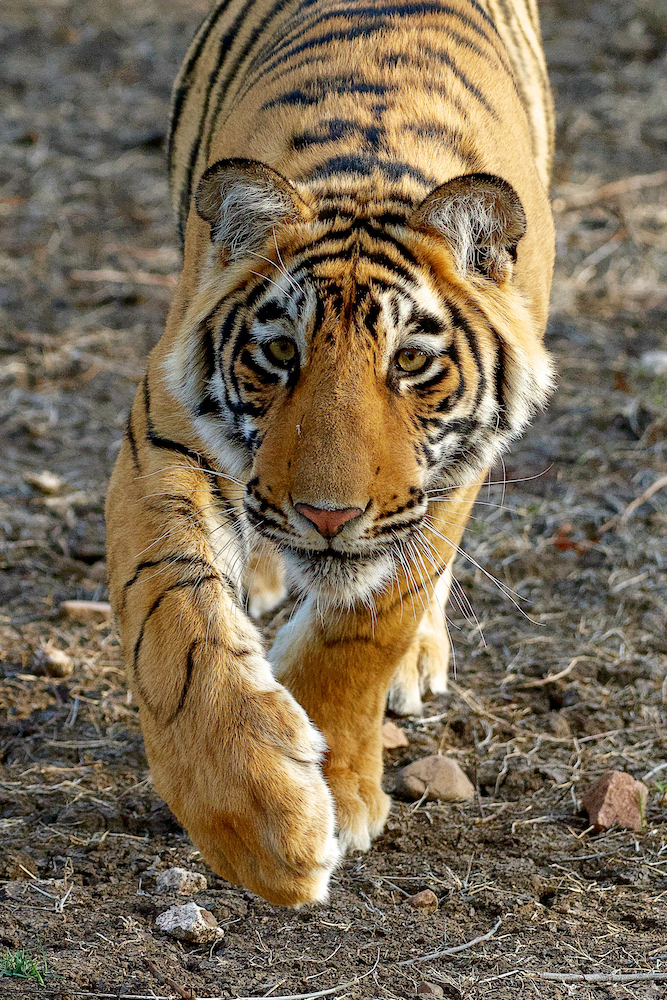
The tiger moved closer and closer to us and started stalking, heading straight for our vehicle. There was a tree between us. He suddenly quickened his pace moving directly towards us. We then realised it wasn't us he was stalking but a squirrel which was out of our sight on the tree trunk. The squirrel was much too fast for him and ran up the tree and out of his way. The tiger then headed off for a stroll down the road.
He takes a walk along the dirt track following our jeep in the early evening light.
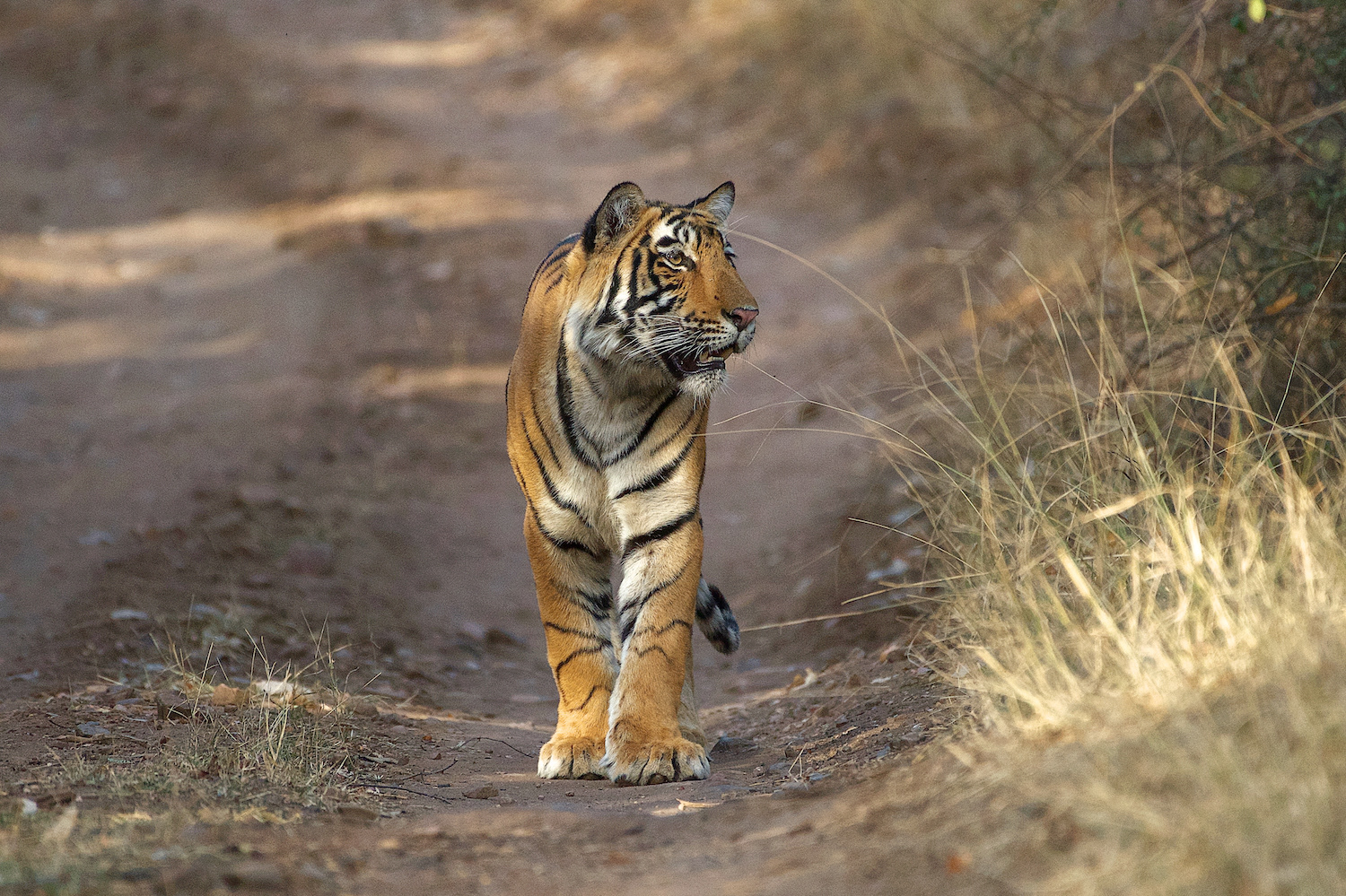
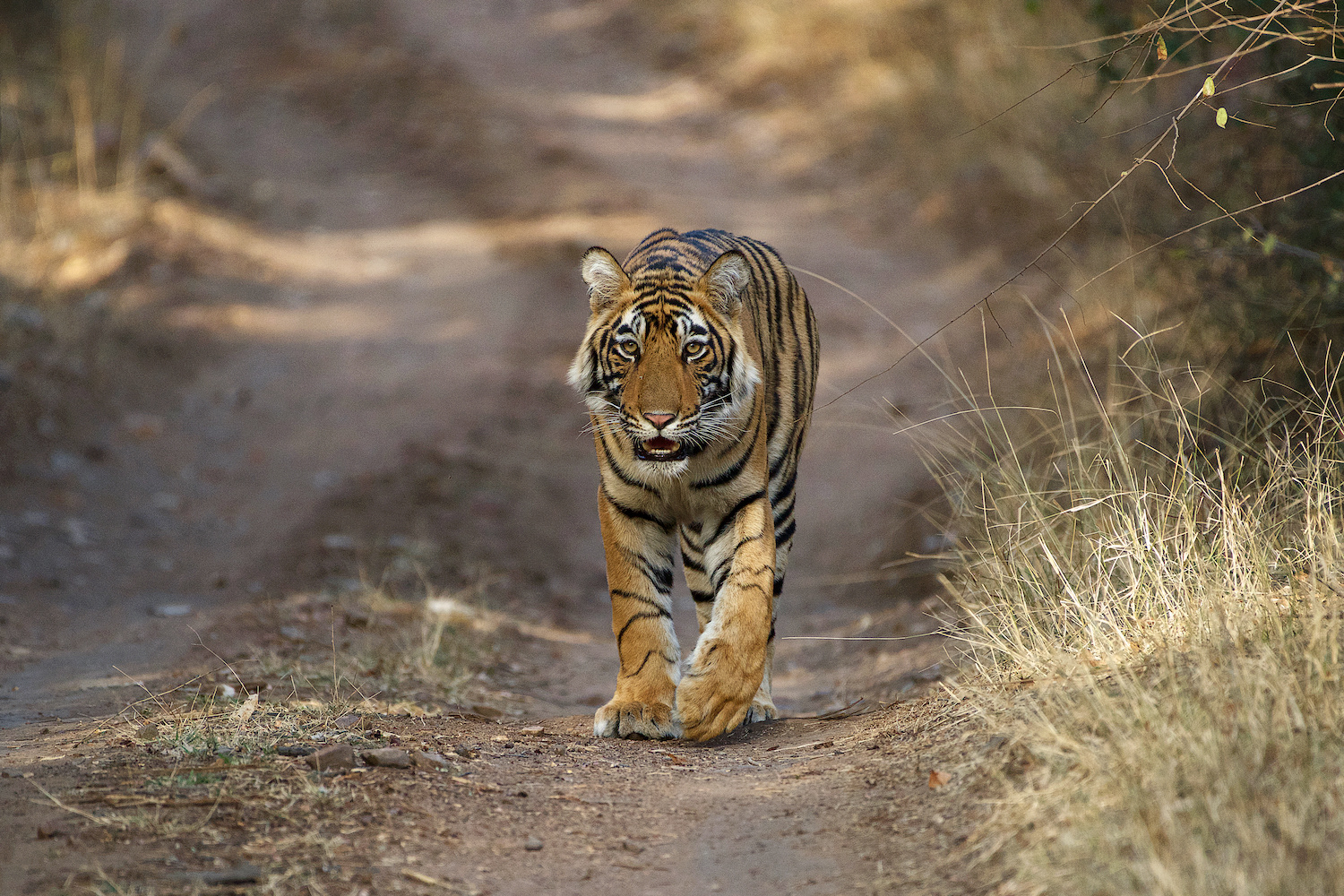
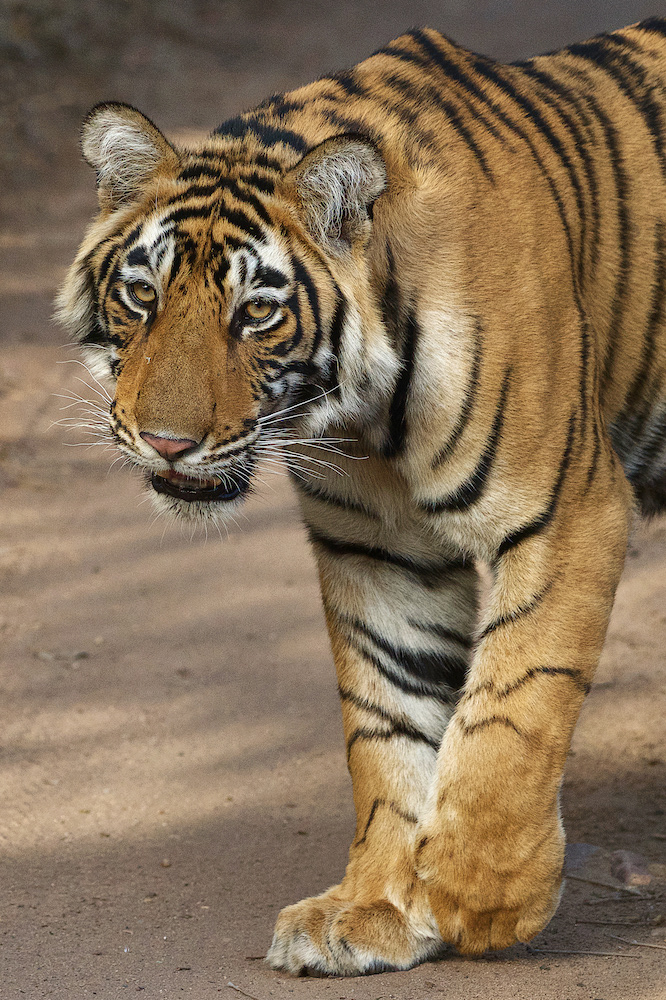


Young male tiger ambling along a forest track in Ranthambore National Park.
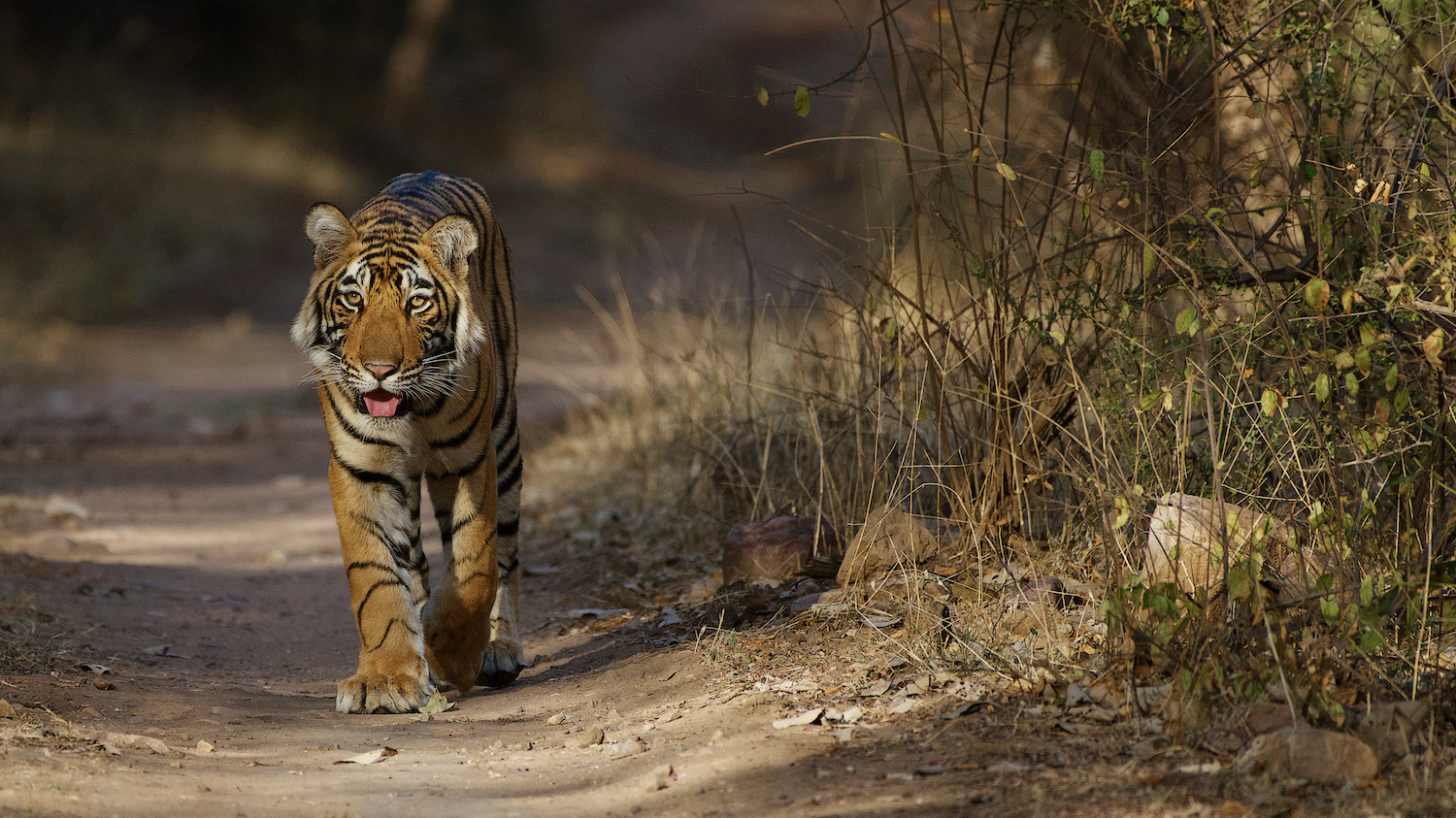


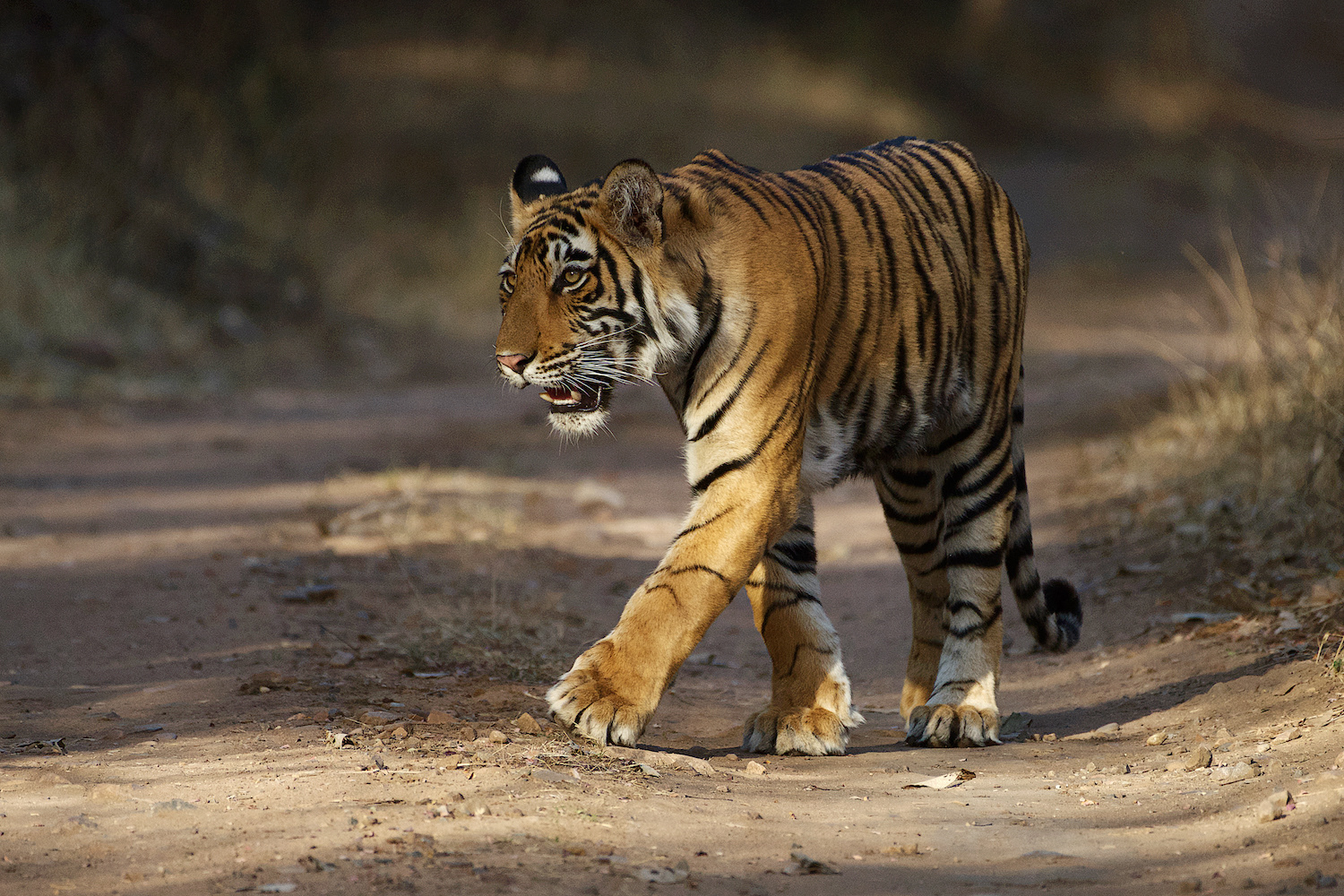


The young tiger looked magnificent as he walked through the beautiful warm light and shade strewn across the track as the forest was lit by the afternoon sun.
Tiger walking along the forest track, bathed in dappled light from the forest canopy.


He then headed off into the forest.
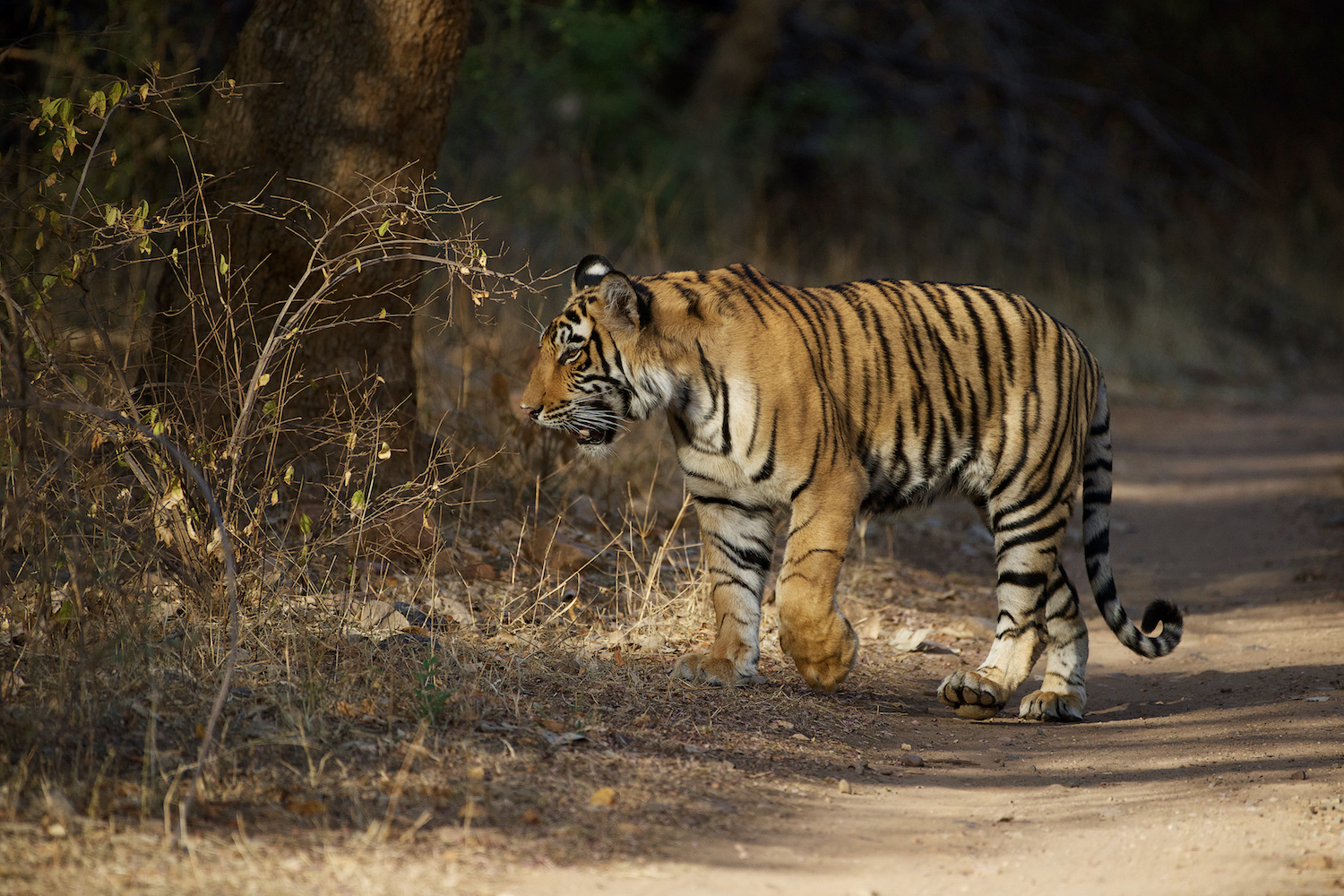

He makes a short diversion into the forest before heading back on to the track.
We then followed him slowly as he continued on his way down the track.
Something appeared to catch his attention and he made his way back into the forest.
He headed towards the trees and began sniffing a tree trunk, checking for any scent that may have been left by another tiger.
The young male showing flehmen response whilst sniffing scent marking left on the tree trunk by another tiger.
The flehmen response takes place when a tiger sniffs and smells the urine left by another tiger. Odours contained in the urine trigger the flehmen response, grimacing with nose wrinkled, and tongue hanging out revealing its canines, this allows him to taste the smell so he can gather more information about other tigers, it may tell him if a female in the area is in heat and ready to mate. Flehmen is a German word that means “lip curl” or “curl the upper lip.”


Having spent around half an hour watching the young tiger he wandered off deeper in the forest leaving us to make a quick exit out of the park!
The peacock has an iridescent blue and green plumage. Its feathers are marked with eyespots, best seen when a peacock fans his tail when trying to attract the attention of a female.
Crested-Serpent Eagle
The rarely seen Jungle Cat, also called the reed cat or swamp cat.


On one of our early morning drives in Zone 6 we came across a dead cow hidden amongst thick bushes at the side of the road. Another jeep had spotted a tiger deep in the forest on the opposite side so we took up our position and waited. Vipul, our guide, told us that a female tigress (T8) was in this area with two cubs and would likely return to the kill. Sure enough, before too long, the tigress came out of the forest and crossed the road in front of us.
The tigress crossed the road between our jeeps. She was in a defiant mood, snarling and showing her teeth, as she made her way to the kill.


The kill was well-hidden in the bushes and we had expected her to remain there to feed on it. However, amazingly, after about five minutes, she suddenly appeared with the large cow in her strong jaws and dragged it across the road directly in front of us. At one point she stopped, let go of the cow and stood over it briefly to get her breath back. She looked towards us, snarled and then picked the cow up again and continued on her way.
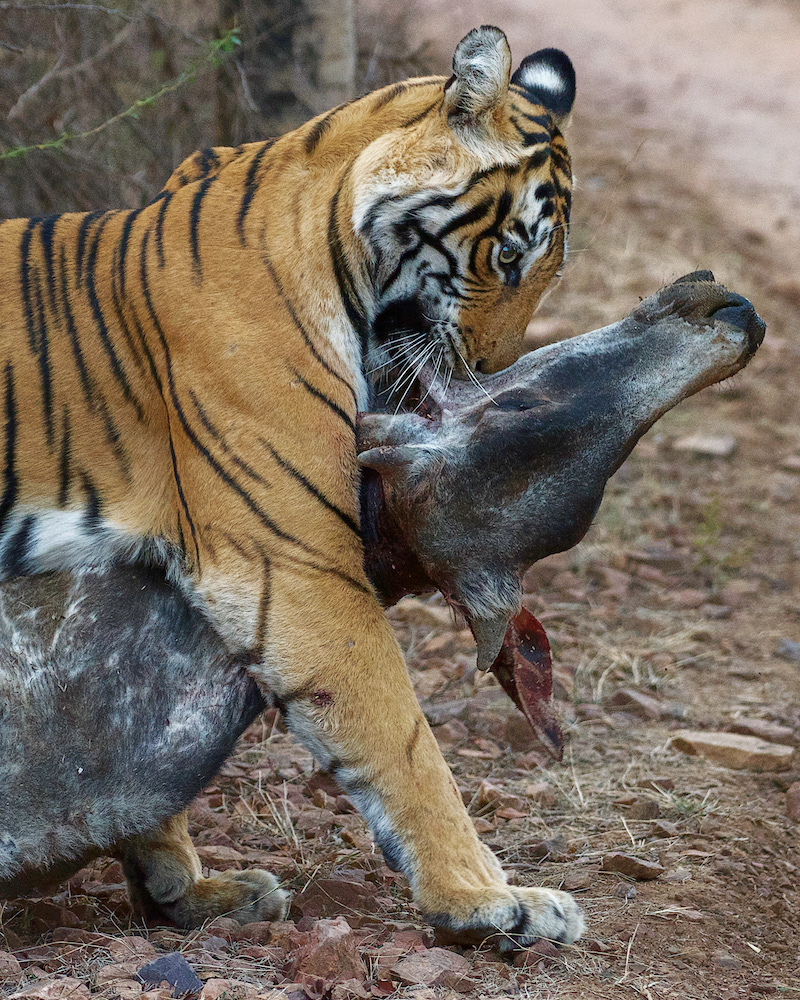

She gives a snarl, just to let us know "It's my kill, so keep your distance!"
Again, she picked up the cow by its throat.

The power and the strength of the tigress was immense.
She dragged the cow off into the forest to take to feed her cubs.
The Brahminy Starling (also known as the Brahminy Mynah) ranges across the Indian subcontinent.


Male Brahminy Starlings fighting, in the warm early morning light.



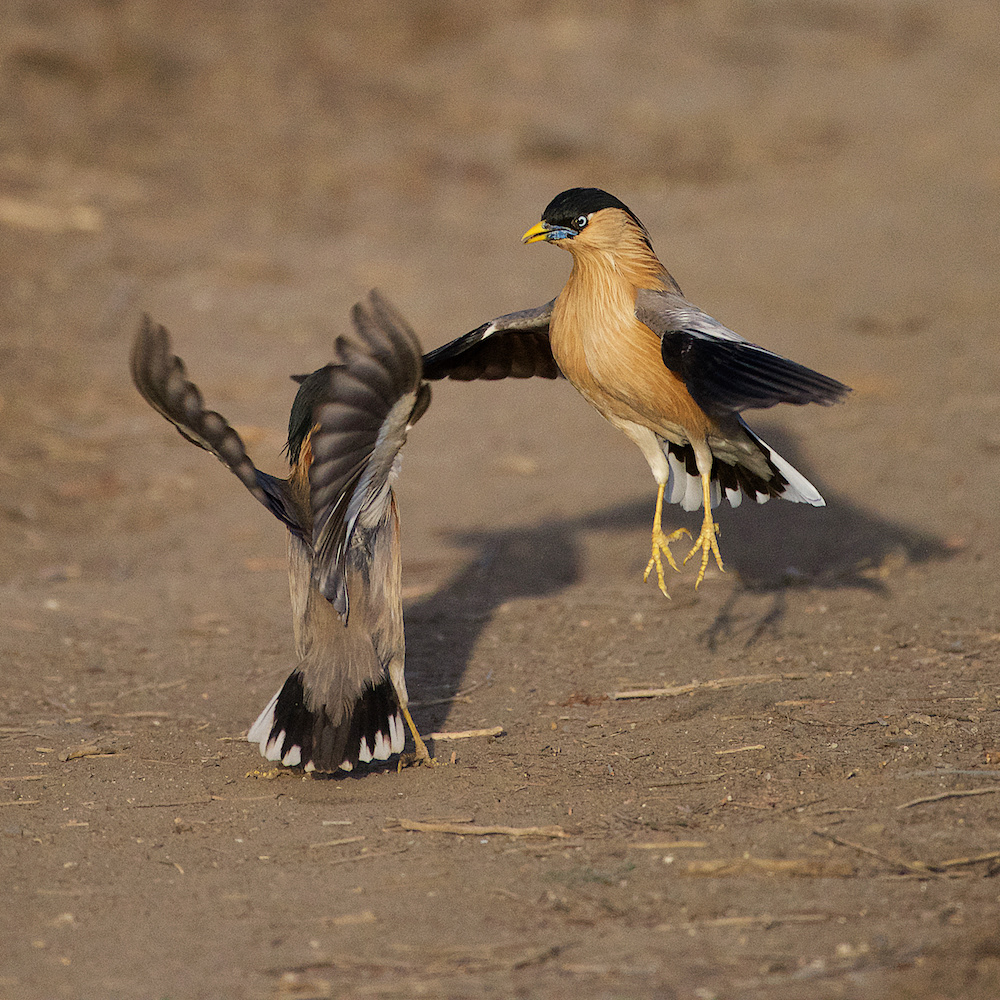

The male starlings fight each other very aggressively in a determined and forceful way.
Leopard watching us from high up on rocks in the forest of Ranthambore National Park.
The leopard, well-camouflaged, watching us through thick, dense foliage.
Indian Mugger Crocodile or Indian Marsh crocodile basking in the sunshine.
Checkered Keelback water snakes are a common species of non-venomous snake found in India.

Late in the evening on one of our drives out of the park we heard alarm calls and spotted a leopard lying in thick forest undergrowth. Leopards are superbly camouflaged hunters, specialising in ambushing and stalking their prey.
The male leopard starts stalking a chital, also known as spotted deer. Keeping a low profile it slinks very slowly and silently through the undergrowth.
As we watched the leopard moving forward with the sound of the chital's alarm calls filling the air, we were excited at the prospect of seeing a kill. However, as the leopard moved closer to its prey, it moved out of our sight. Unfortunately it was getting late and we had to leave without knowing whether the hunt had been successful or not.
Driving across farmlands outside the boundaries of Ranthambore National Park with our guide, Vijay, in the search of Blackbuck antelope.
Male Blackbuck antelope with its long, spiralling horns which are marked with rings and sweep backwards from the head in a v-shape.
A male Blackbuck antelope with his harem of females.
Great Egret catching fish.
Old and new forms of transport in rural Rajasthan. The sedate oxen and cart being overtaken by the more modern tractor with loud music blasting out.


Woman busy harvesting her crops.
National Chambal Gharial Sanctuary
Palighat, Rajasthan
Palighat Sanctuary is situated on the banks of the Chambal river which is around 35 kms away from Ranthambore. We made the visit to see the Gharial which is a crocodilian that is native to the Indian subcontinent and is also known as the fish-eating crocodile.
We took a small boat on the river to try and get a good view of the Gharial. They can be very skittish and if you get too close they will disappear into the water very quickly.
Gharials are listed as Critically Endangered and now exist in the wild in only a few small areas of India and Nepal. Recent surveys indicate there may be less than 200 mature breeding adults left in the wild and the Chambal river is their last stronghold. They are protected under wildlife and conservation acts and it is illegal to kill gharials or collect gharial eggs, but the most significant threat is from habitat destruction and death caused by illegal fishing and turtle poaching. Gharials are often caught in fishing nets, which get wrapped around their snouts and they may starve to death or drown. They also get caught on lines of hooks set for turtle poaching and they face these threats even within protected areas.
Gharials basking in the sun on a sandy bank of the Chambal river.
The average length of a mature Gharial is between 3.5 to 4.5 m (11 to 15 ft), with the largest recorded length of 6.25 m (20.5 ft).
Gharials have very long narrow jaws that are lined with many interlocking, razor-sharp teeth. Their teeth are perfect for holding onto a struggling fish.
This Gharial decided we were getting too close and heads into the water.
Fly-past by a group of Lesser Whistling Ducks.
The Indian Skimmers or Indian scissor-bills in flight over the Chambal river, in Rajasthan.


Very old temple on the banks of the Chambal.
View of the river from the temple.
Vipul, our guide, points out some of the more erotic carvings on the temple!

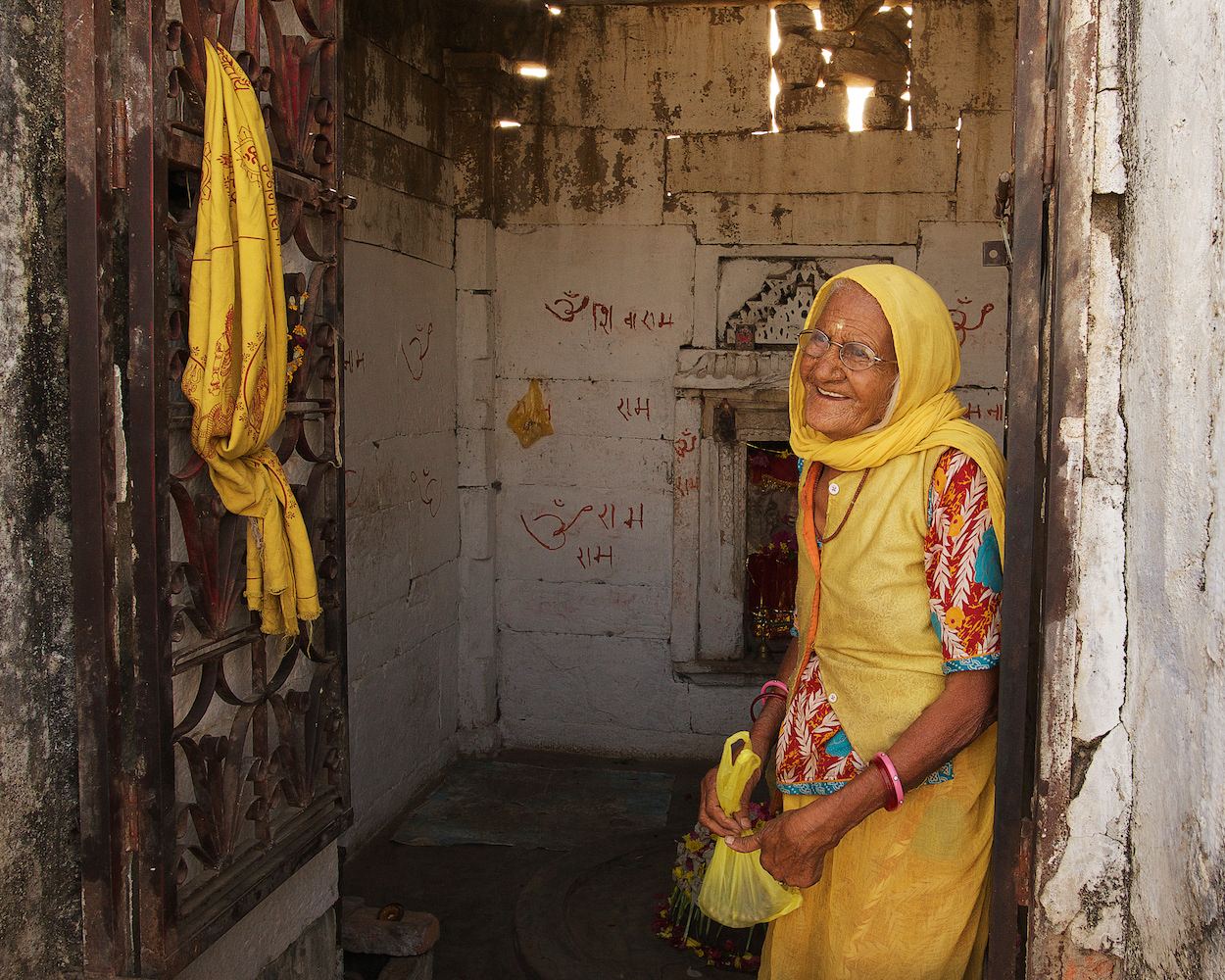
Village lady who looks after the temple, invites us to have a look on the inside.










